Final destination for our Kolkata Walk
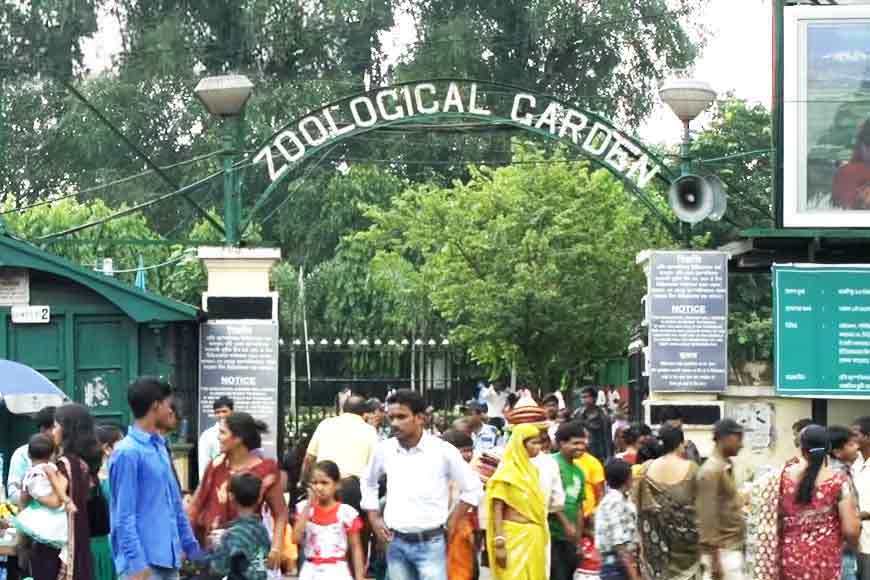
Zoological Garden, Alipore
As we near the end of our walking tour of Kolkata, it is now time to venture to the south and west, and heading to the centre. The best place to start is Rabindra Sadan, from where you can hop onto a bus for the short trip to Khidirpur, or Kidderpore as it is still occasionally spelled. The origin of the name Khidirpur is likely to have been ‘Khidr’ or ‘Khizr’, long considered one of the patron saints of Bengal’s fishing communities. The neighbourhood’s position alongside the river certainly makes the theory plausible.
Having ended our last walk at St Stephen’s Church on Diamond Harbour Road, it is time to walk back across Khidirpur Bridge and turn right past Turf View. Then, cross the Zeerut Bridge over the Adi Ganga on to Alipore Road.
Point A - Zoological Garden, Alipore
The fancy name for Alipore Zoo (sometimes called Calcutta Zoo) is the Zoological Garden, India’s oldest official zoological park. It has been open to the public as a zoo since 1876, and covers about 46.48 acres (approximately one sq km) of land. One of the city’s most popular tourist attractions, it draws huge crowds in winter, particularly in December-January, when easily over 100,000 people throng to it every day.
Alipore Zoo has its origins in a private menagerie established around 1800 by Governor-General Richard Wellesley in his summer home at Barrackpore, as part of the Indian Natural History Project. Sir Stamford Raffles visited the menagerie in 1810, and reportedly used some aspects of the menagerie as an inspiration for the London Zoo, opened in 1828. In 1873, Lieutenant-Governor Sir Richard Temple formally proposed the formation of a zoo in Kolkata, and the government finally allotted land for a zoo based on a joint petition of the Asiatic Society and Agri-Horticultural Society.
The zoo was inaugurated on January 1, 1876 by Edward VII, then Prince of Wales, and was opened to the public on May 6. The initial stock came from the private menagerie of Carl Louis Schwendler (1838-82), a German electrical engineer posted in India. Gifts were also accepted from the general public. The animals from the Barrackpore menagerie were added to the collection in 1886, and there were successive contributions from both British and Indian nobility - such as Raja Suryakanta Acharya of Mymensingh, in whose honour the open air tiger enclosure is named Mymensingh Enclosure. Other significant contributors included the Maharaja of Mysore, Krishna Raja Wadiyar IV.
The first Indian superintendent of the zoo was Ram Brahma Sanyal, who did much to improve the international prestige of Alipore Zoo thanks to an outstanding captive breeding programme far ahead of its time. He is even credited with a live birth of the rare Sumatran rhinoceros in 1889, and the enormity of this achievement can easily be measured by the fact that the next time a Sumatran rhino was born in captivity was at the Cincinnati Zoo in 2001.
Alipore Zoo remained a pioneer among zoos in the 19th and early part of the 20th century under Sanyal, who published the first handbook on captive animal keeping. Kalakaua, the last king of Hawaii, visited the zoo on May 28, 1881 during his world tour.
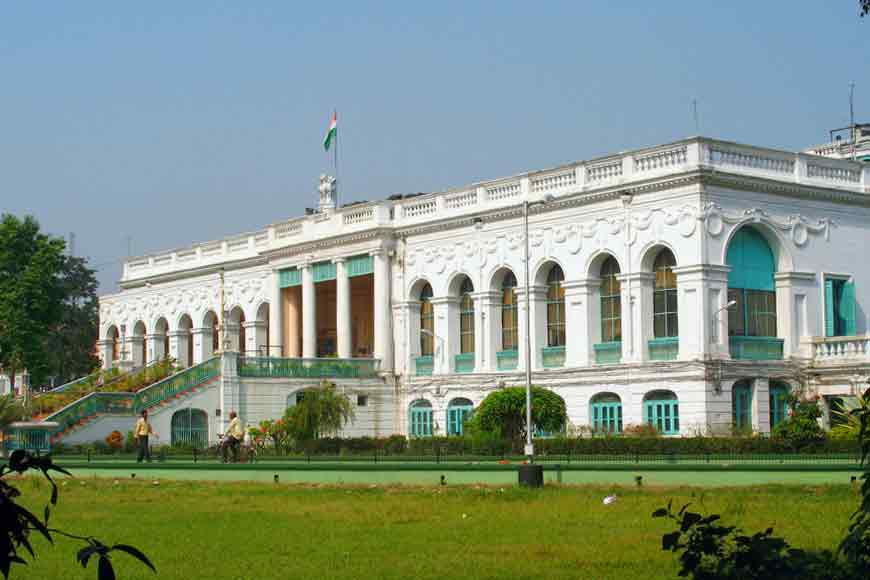
Point B - National Library
The National Library of India, to give it its proper name, is India’s largest library by volume and public record. An institution under the Ministry of Culture, Government of India, the library has a collection in excess of 2.2 million (22 lakh) books and records, and before independence, was the official residence of the Governor-General of India. It is the repository of some of the country’s rarest books, manuscripts, and maps, and its special collections house publications in at least 15 languages. The Hindi department, for instance, has books that date back all the way to the 19th century and the first ever books printed in Hindi.
The present library is a successor to the Imperial Library formed in 1891 by combining a number of Secretariat libraries in Calcutta, though use of the library was limited to senior government officials only. Sir Ashutosh Mukherjee was appointed president of the Imperial Library Council in 1910, and donated to it his personal collection of a staggering 80,000 books. The Government of India changed the name of the library to the National Library in 1948, and the collection was transferred to the present Belvedere Estate. On February 1, 1953, the National Library was opened to the public by Maulana Abul Kalam Azad.
Read the earlier episodes of our walk :
Enjoy the lockdown with your very own customised Kolkata Walk
A little bit of BBD Bag, a whole lot of Calcutta
Esplanade, the beating heart of old Calcutta
The places of worship in old Calcutta, and what we learn from them
Walk on for a perfect balance of religion and commerce
On the waterfront: a walk along the Hooghly
Walking around the ‘native’ palaces of Kolkata
A walk down Sealdah and Bowbazar, among the oldest areas of Kolkata
Walking through the centre of Kolkata
Old Calcutta’s temple trail, a cultural odyssey
Lost in obscurity, Calcutta’s oldest surviving temples
Walking down College Street, home to temples of learning
From Kali to Jagannath to Star Theatre, a walk to remember
Back to ‘saheb para’, the heart of White Calcutta
Caught between two worlds, walking in Calcutta’s grey town
Walk through Kolkata’s cities of the dead
Walk near the docks that made Calcutta
The premises at Belvedere have an interesting history of their own. Reportedly the property of Emperor Aurangzeb’s grandson Azim-us-Shan when the latter was the viceroy of Bengal and Bihar in 1700, the property was apparently taken over by Mir Qasim when he became Nawab of Bengal in 1757. Warren Hastings then acquired the property and sold it to Colonel William Tolly in 1778. The premises then became the official residence of the Army’s Commander-in-Chief, and around 1854, that of the Governor-General of Bengal. The majority of the books that it houses today were initially housed in Metcalfe Hall on Strand Road, then at the Imperial Offices on Esplanade Row, before being shifted here in 1953.
Point C - Agri Horticultural Society of India
The Agri Horticultural Society of India was founded in 1820 by William Carey (1761-1834) on Alipore Road, making it the oldest organisation of its kind in India. Carey was an English Christian missionary, Baptist minister, translator, social reformer and cultural anthropologist, who founded the Serampore College and Serampore University, the first degree-awarding university in India. He also translated the Ramayana into English, and the Bible into Bengali, Oriya, Assamese, Marathi, Hindi and Sanskrit.
The horticulture society gardens are a treasure trove of information about native plant species, and their regular flower shows are spectacular events. Winter and spring are particularly rewarding times for a visit.
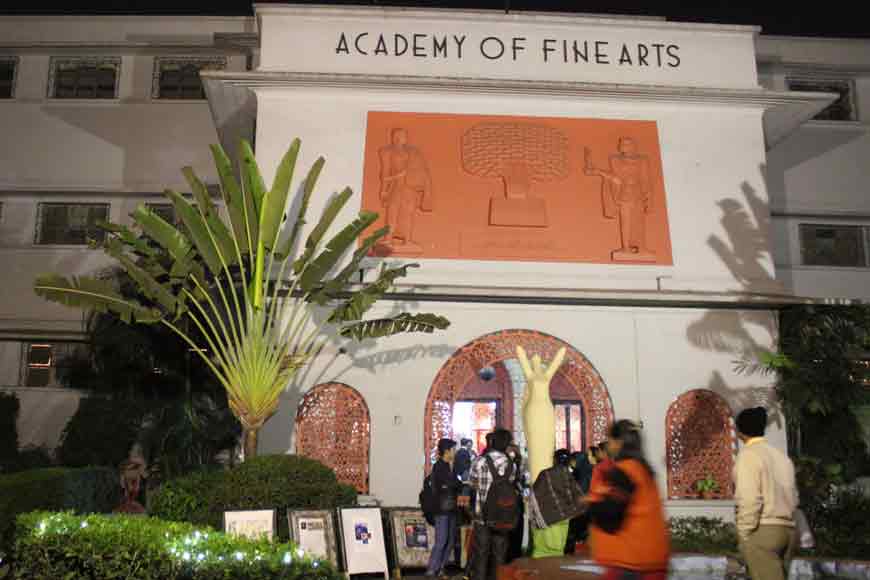
Point D - Academy of Fine Arts
Take a bus from Alipore back to Rabindra Sadan, and begin walking down Cathedral Road. You will soon reach the Academy of Fine Arts, one of India’s oldest fine arts societies, formally established in 1933 by Lady Ranu Mookerjee. Initially located in a room loaned by the Indian Museum, it would hold its annual exhibitions in an adjoining verandah.
In the 1950s, thanks to the efforts of Lady Ranu and the support of Dr Bidhan Chandra Roy, then Chief Minister of West Bengal, as well as Jawaharlal Nehru, the Prime Minister of India, the academy was shifted to its present premises on Cathedral Road, beside St. Paul’s Cathedral. The two-storey building has three permanent galleries, as well an exhibition space on the ground floor that hosts exhibitions all year round. It has also played a critical role in the survival and continuation of Bengali group theatre, with its auditorium hosting stage productions very regularly.
Among the famous paintings in the academy’s permanent collection are Saat Bhai Champa by Gaganendranath Tagore, and Shiva with Ganesh by Jamini Roy.
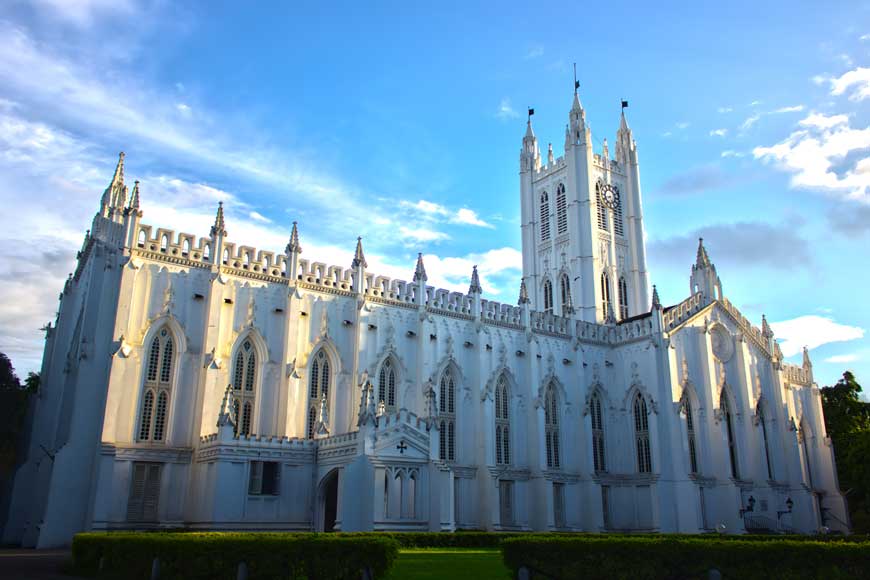
Point E - St Paul’s Cathedral
St. Paul’s Cathedral is a Church of North India cathedral of the Anglican denomination and the seat of the Diocese of Calcutta, noted for its unique ‘Indo-Gothic’ architecture. The cornerstone for the cathedral was laid in 1839 and the building was completed in 1847. It is reportedly the largest church in Kolkata and the first Anglican cathedral in Asia, as well as the first new-built cathedral in the overseas territories of the British Empire.
The cathedral was built to replace St John’s Church, which had become too small for Calcutta’s growing European community. In 1819, at the request of Governor-General Hastings, Royal Engineers officer William Nairn Forbes produced a design for a proposed cathedral, but it was deemed too expensive to build. It was not until 1832, under Bishop Daniel Wilson, that the project to build the cathedral was revived.
Nairn Forbes designed the cathedral with the assistance of architect C.K. Robinson, modelling the tower and spire on Norwich Cathedral. In 1897, an earthquake caused mild damage to the cathedral, but the massive earthquake of 1934, which devastated Calcutta, broke the cathedral’s steeple tower. It was then reconstructed along the lines of the central Bell Harry tower of Canterbury Cathedral. Today, people of all religious faiths can visit the church, and services are held regularly. On Christmas Eve, a large number of people assemble for midnight mass.
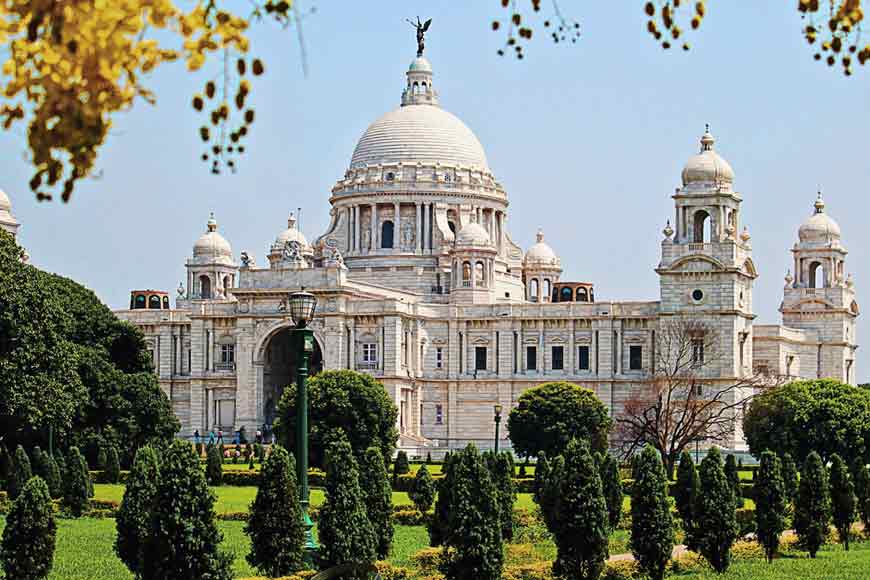
Point F - Victoria Memorial
One of the best known symbols of Kolkata,the magnificent Victoria Memorial was the brainchild of Viceroy Lord Curzon who, in January 1901, suggested the creation of a grand museum and gardens to honour the death of Empress Victoria. The Prince of Wales laid the foundation stone on January 4, 1906, and the memorial was opened to the public in 1921. Of course, before work on the memorial could be completed, the capital of British India shifted from Calcutta to Delhi in 1912, which Curzon had clearly not anticipated.
The memorial was funded mainly by the Indian public. Both politicians and ordinary Indians responded generously to Curzon’s appeal for funds, and the total cost of the monument, amounting to a little over Rs 1 crore, was entirely derived from crowdfunding. The architect William Emerson (1843-1924) built the memorial in an Indo-Saracenic revivalist style, using a mixture of British and Mughal elements with Venetian, Egyptian, and Deccani architectural influences. The building, made entirely of white Makrana marble, measures 338 by 228 feet and rises to a height of 184 feet. Atop the central dome of the Victoria Memorial is the 16-feet tall figure of the Angel of Victory.
The fascinating collection of artefacts in the museum come mostly from colonial and Mughal India, and are well worth the time spent on them. Today, it remains one of Kolkata’s principal tourist attractions.
We may have reached the end of our walk with Kolkata’s best known monument, but please don’t stop walking! Keep exploring our city and its many treasures, and let us know your views on them.











